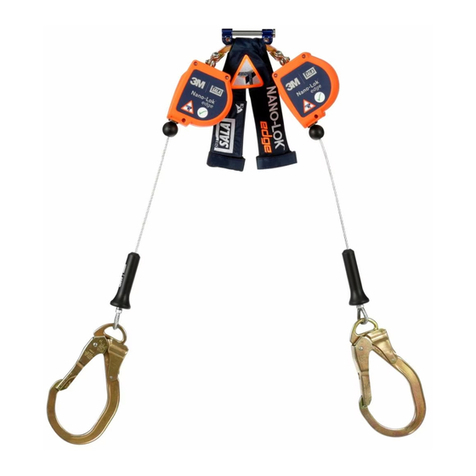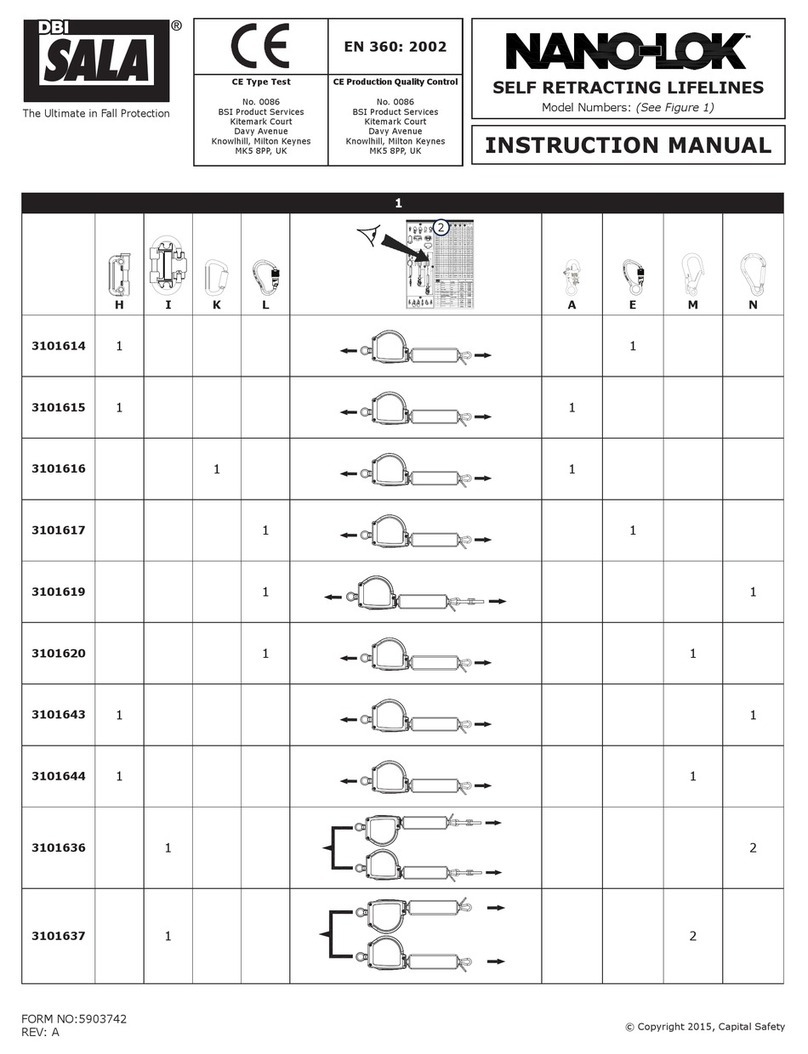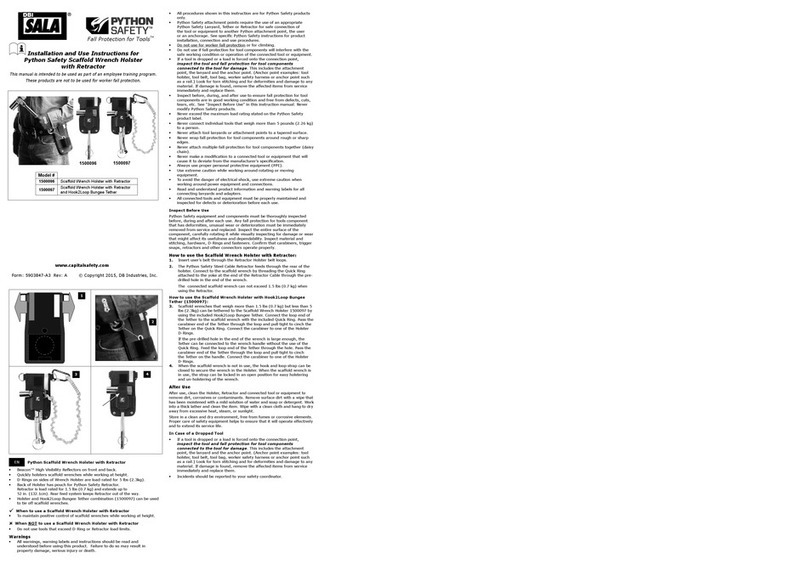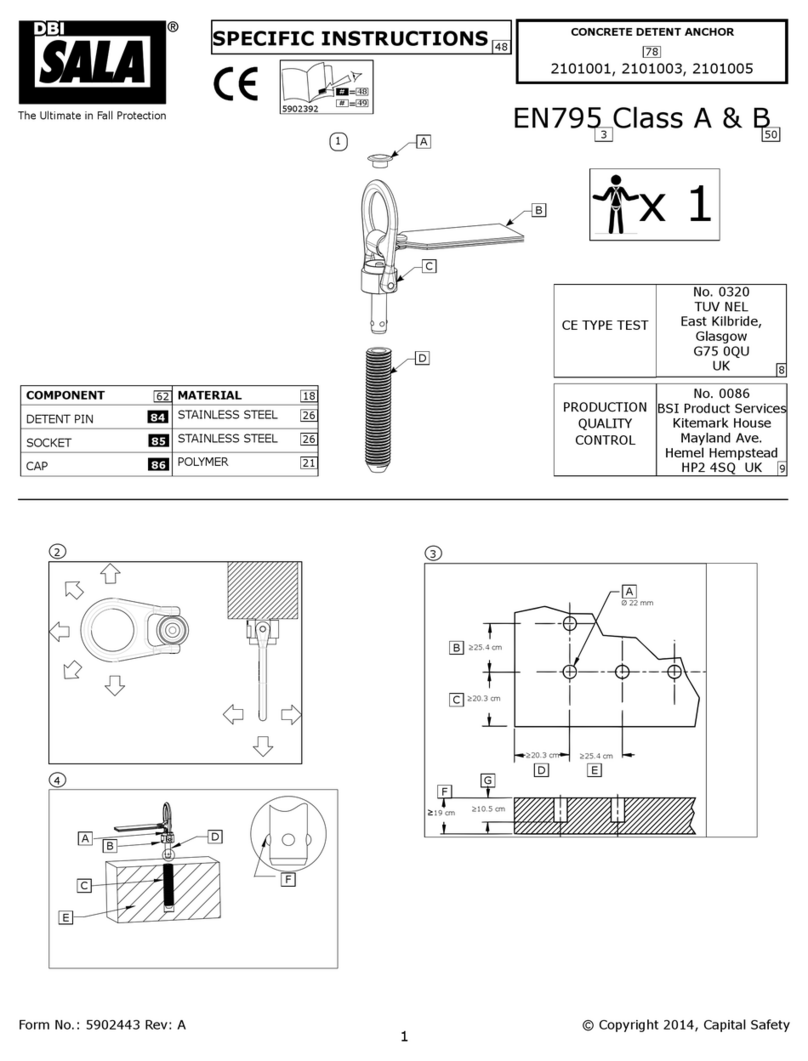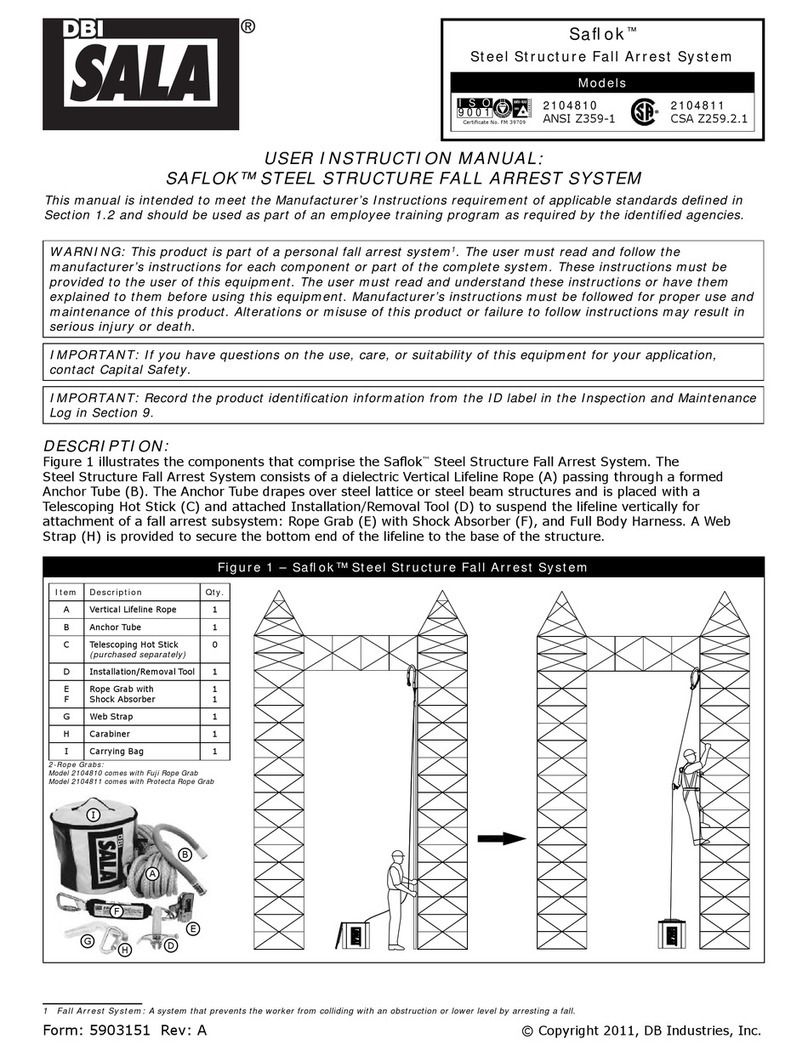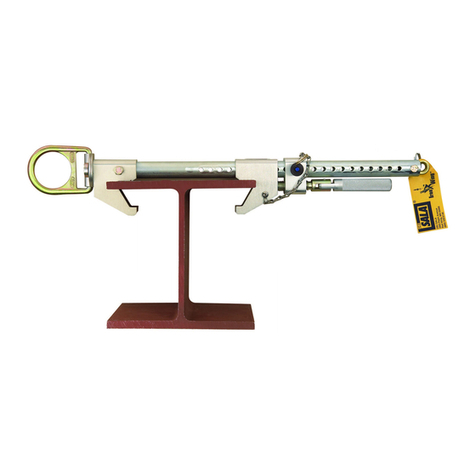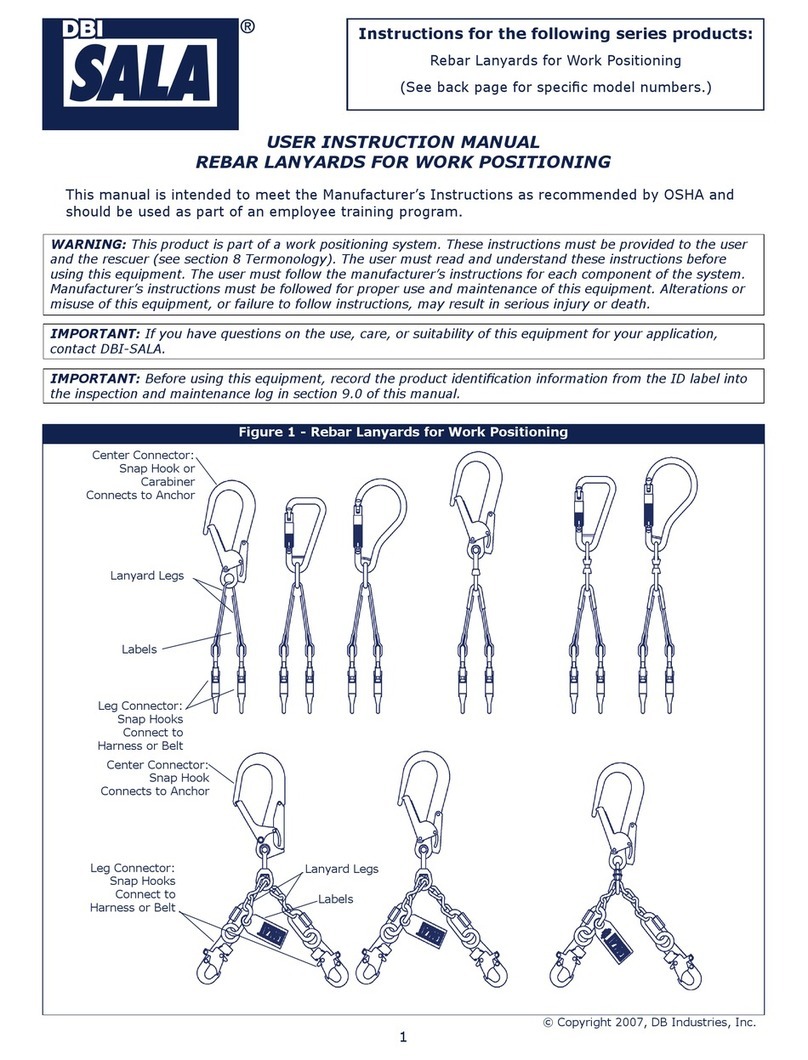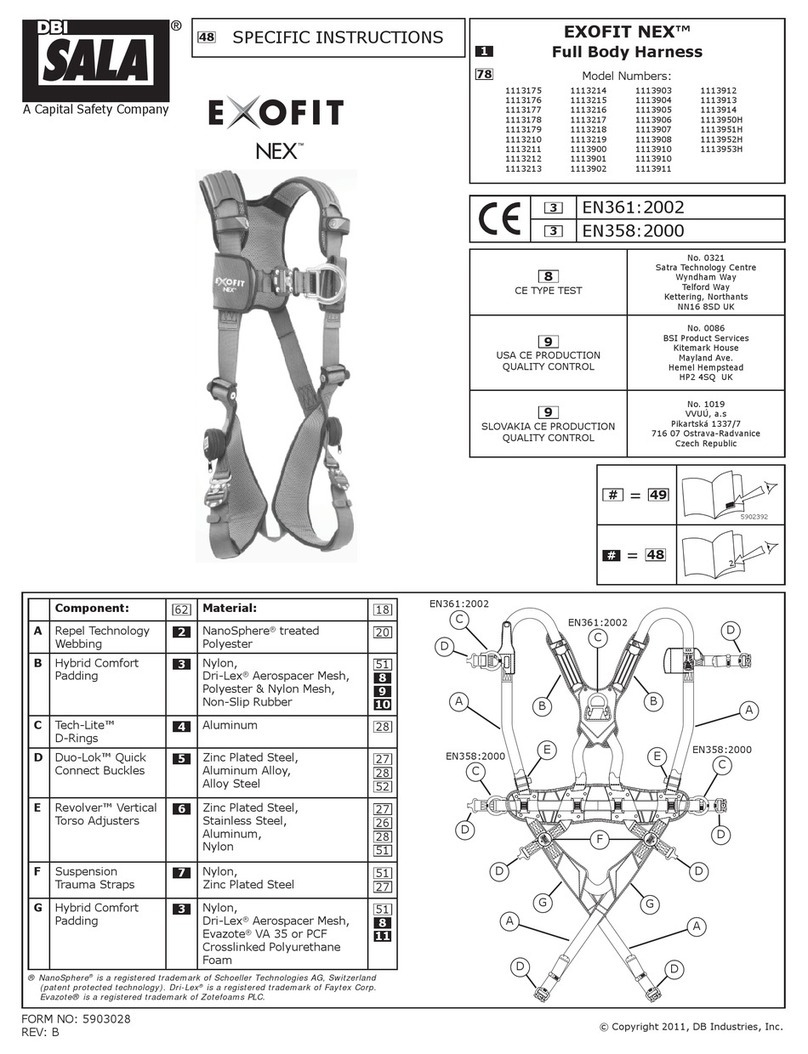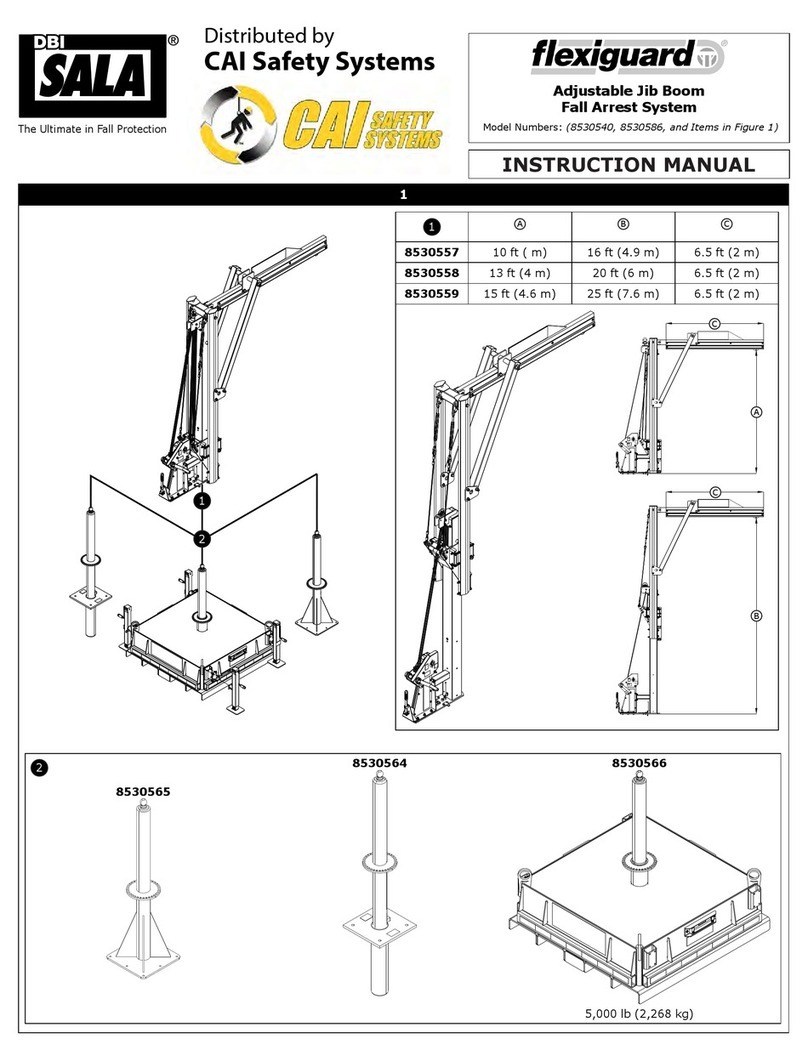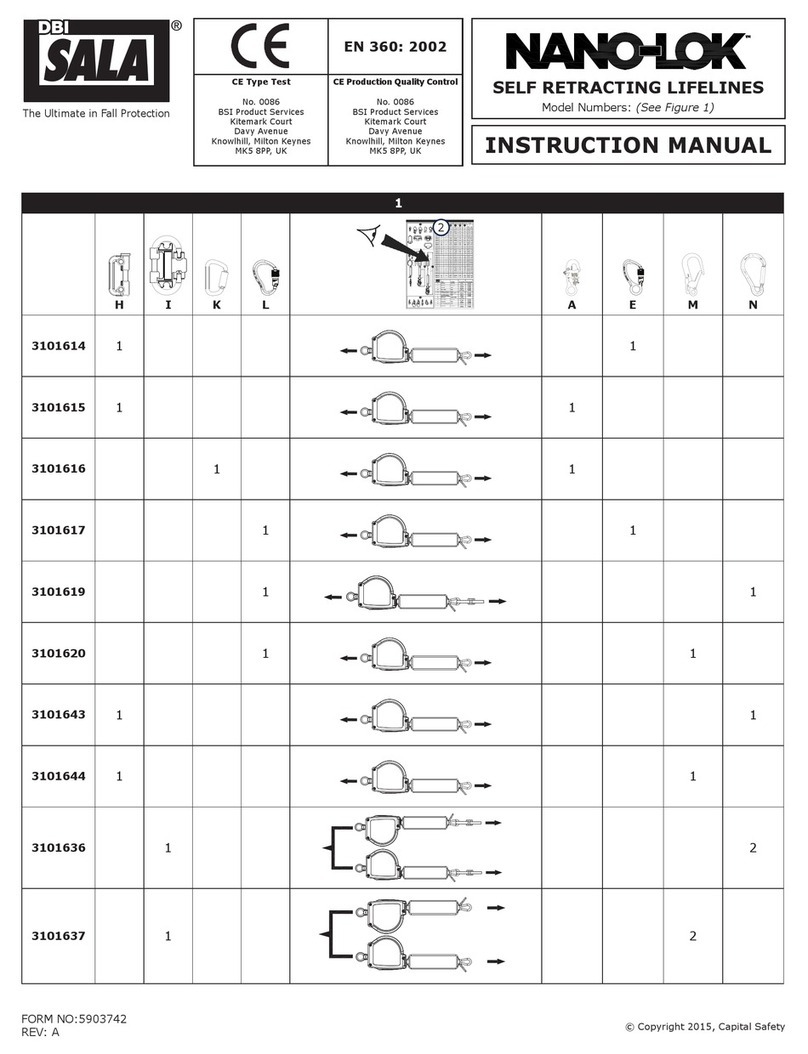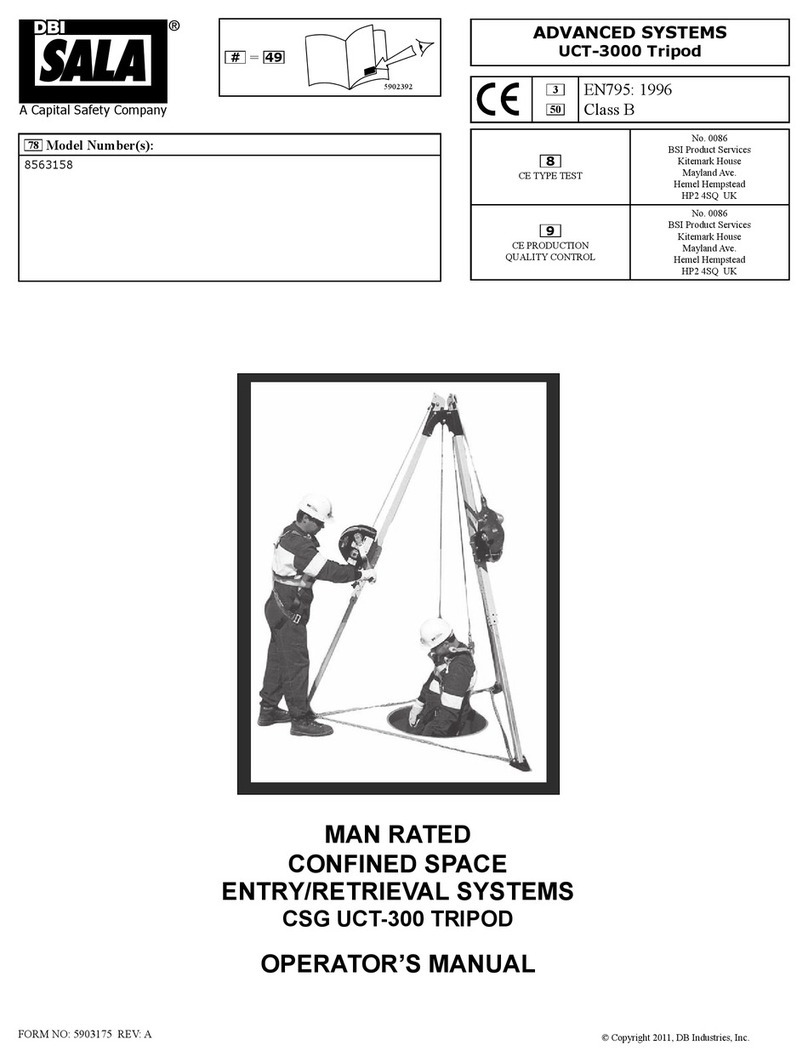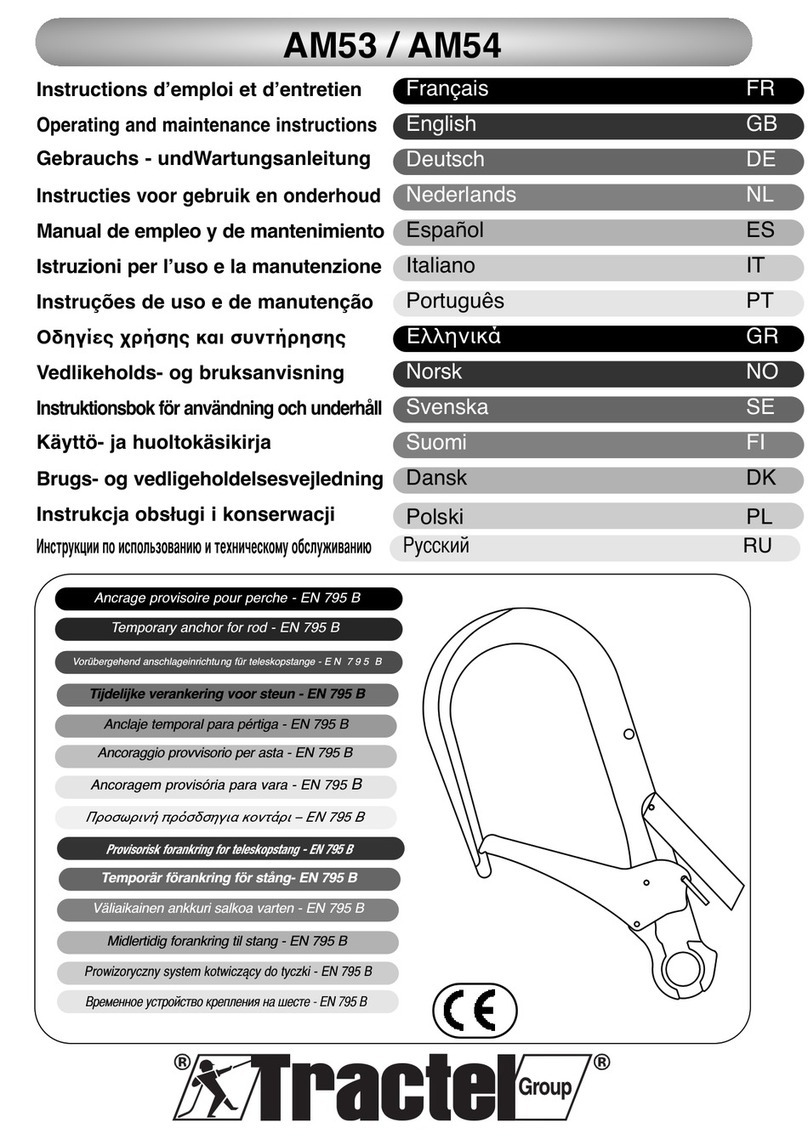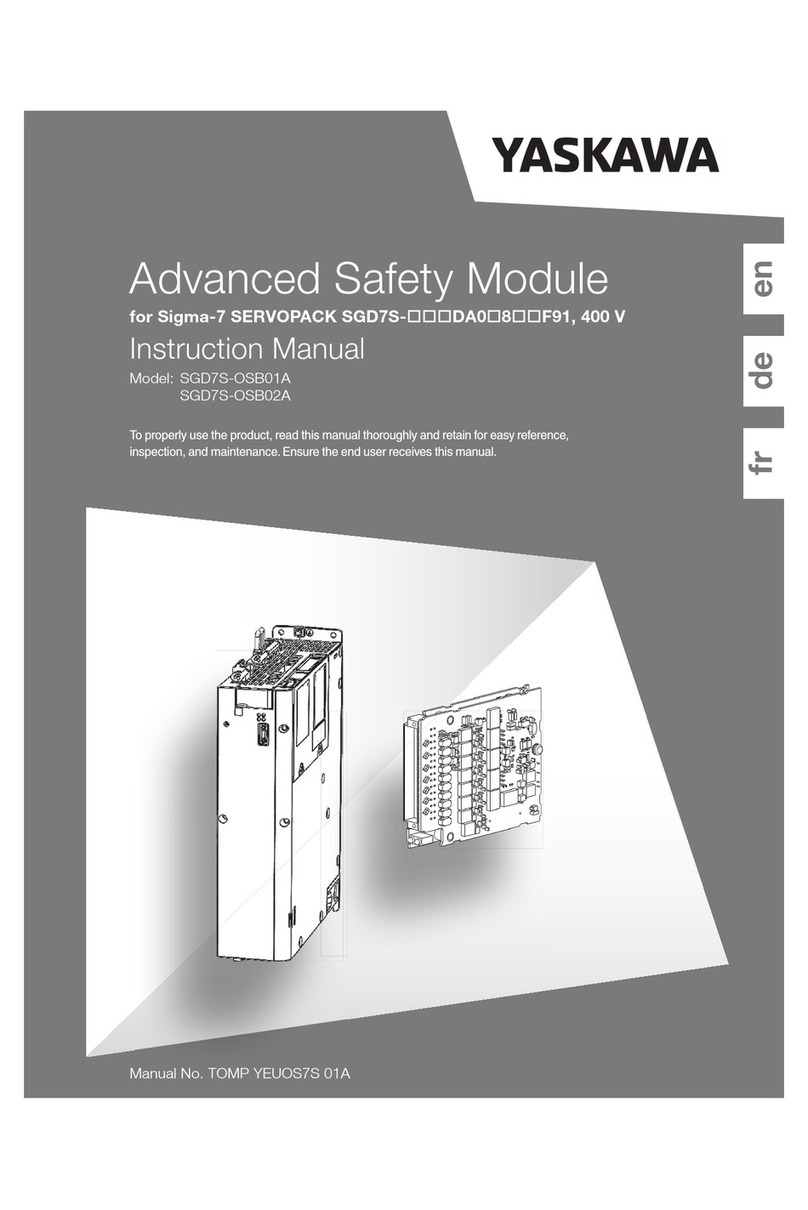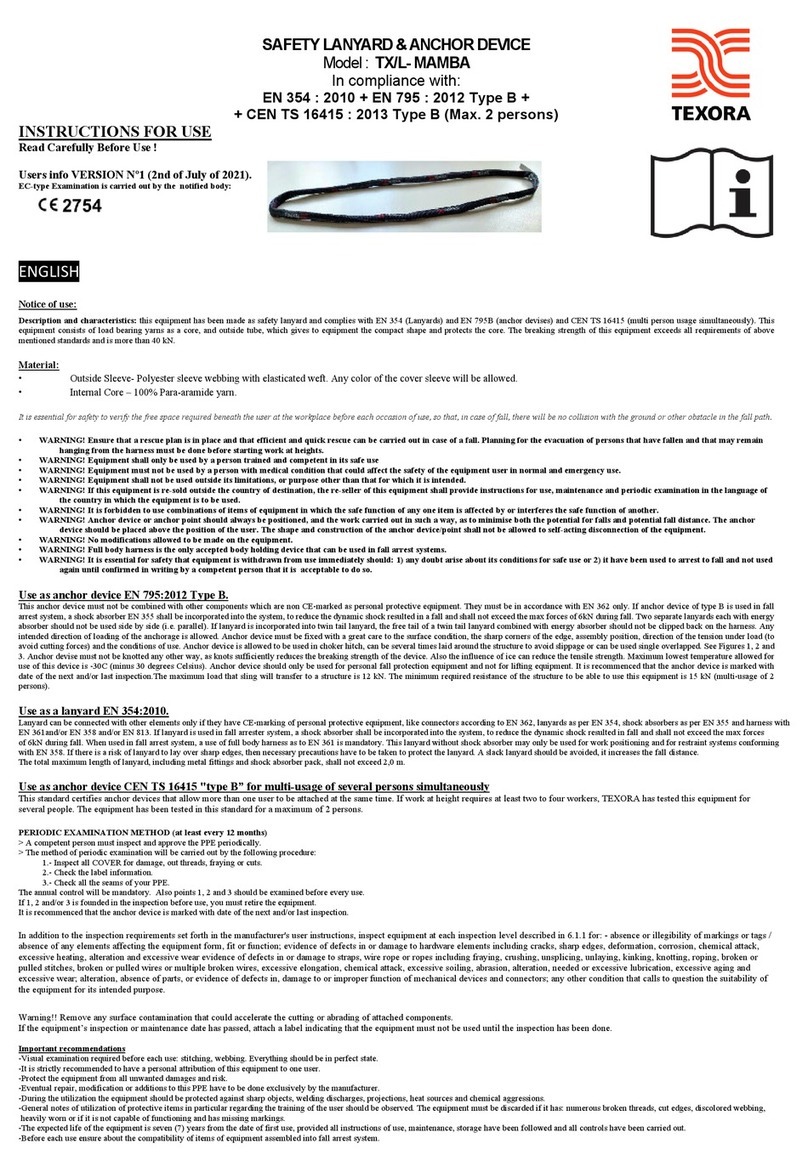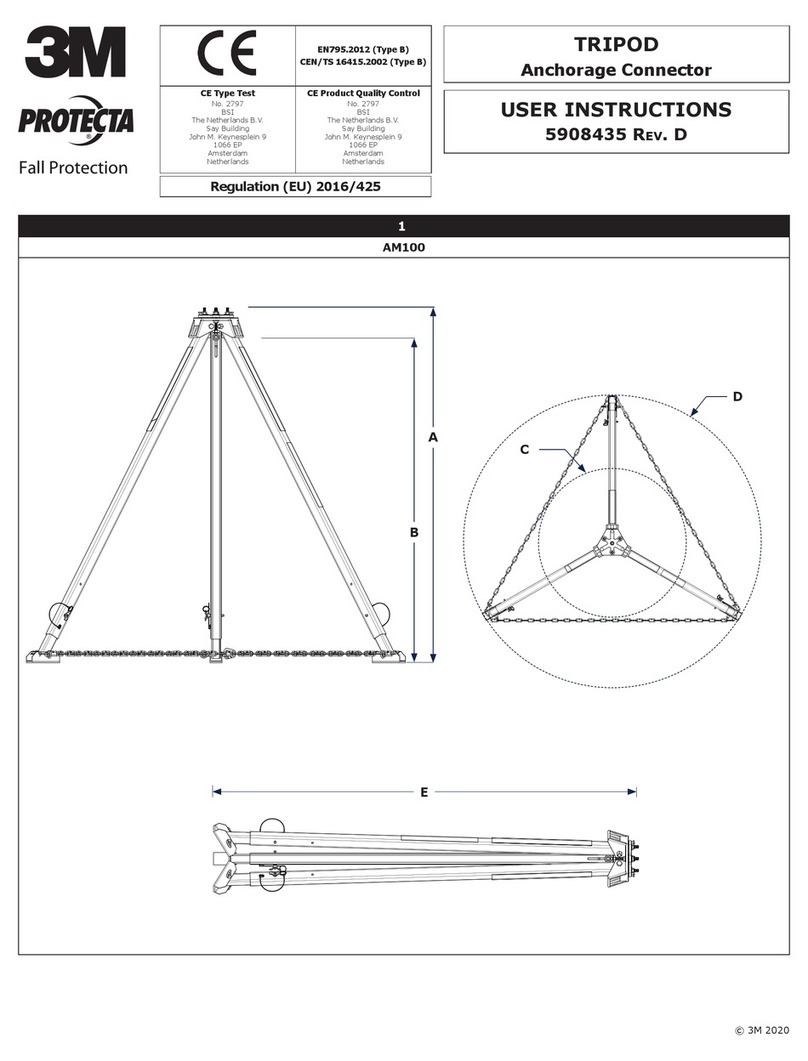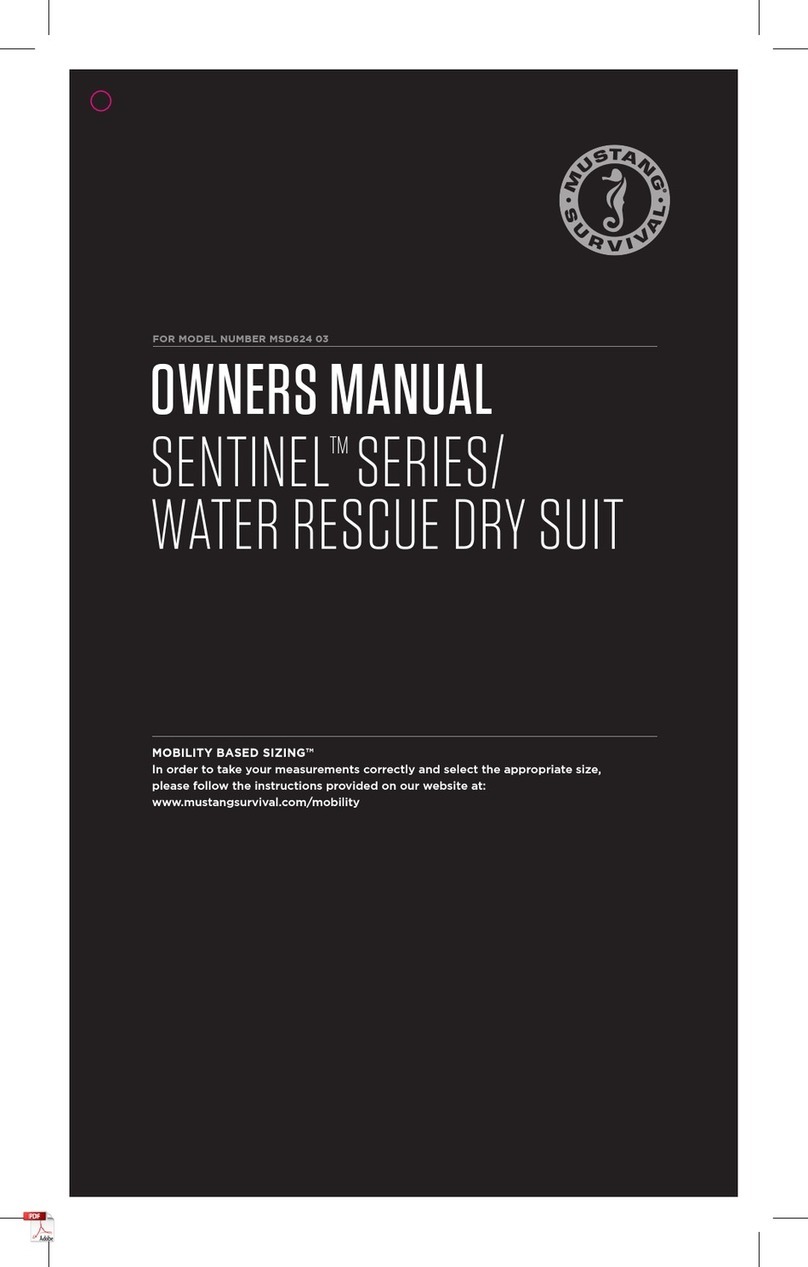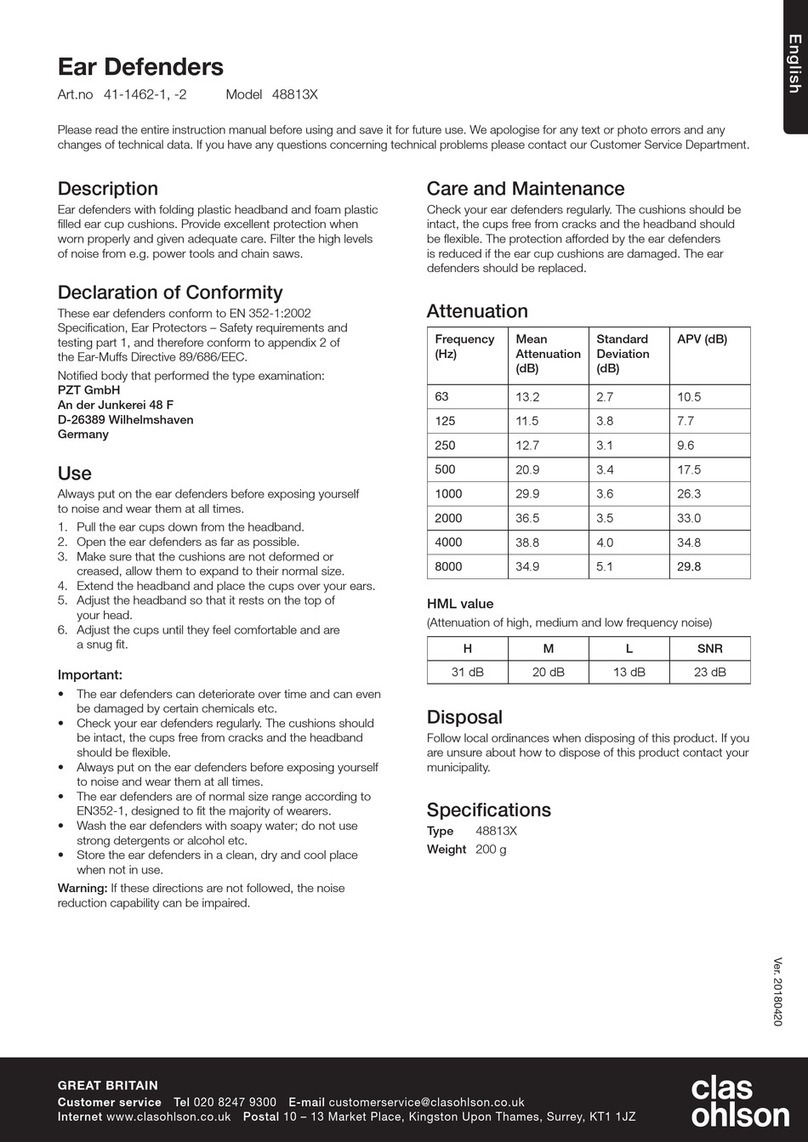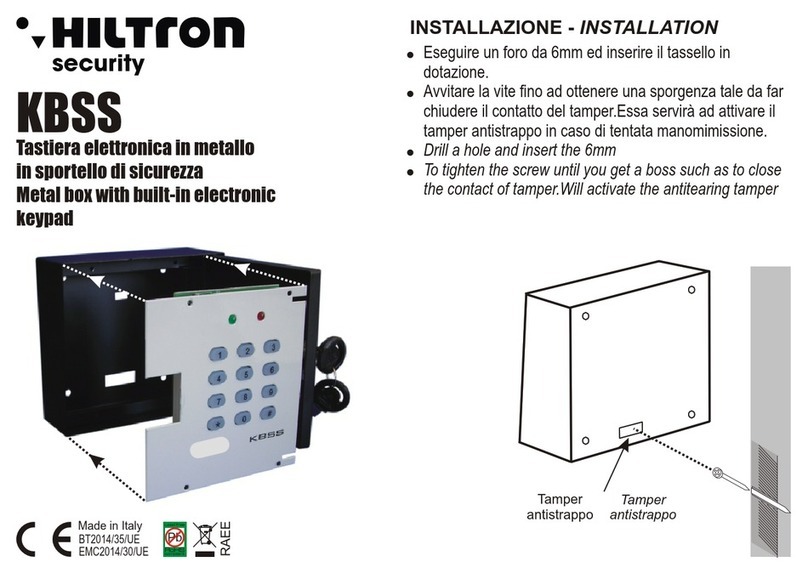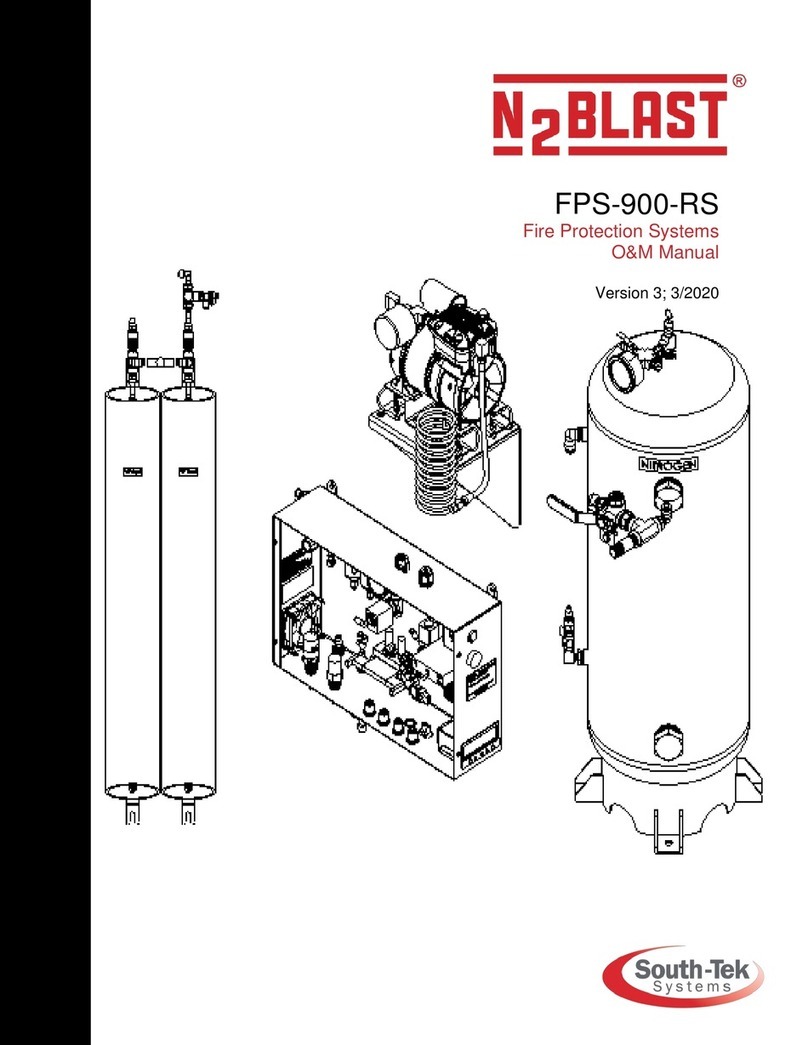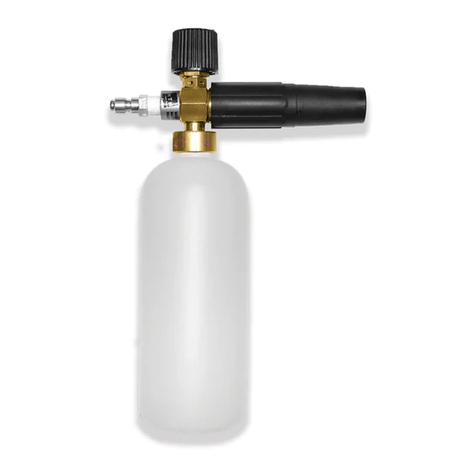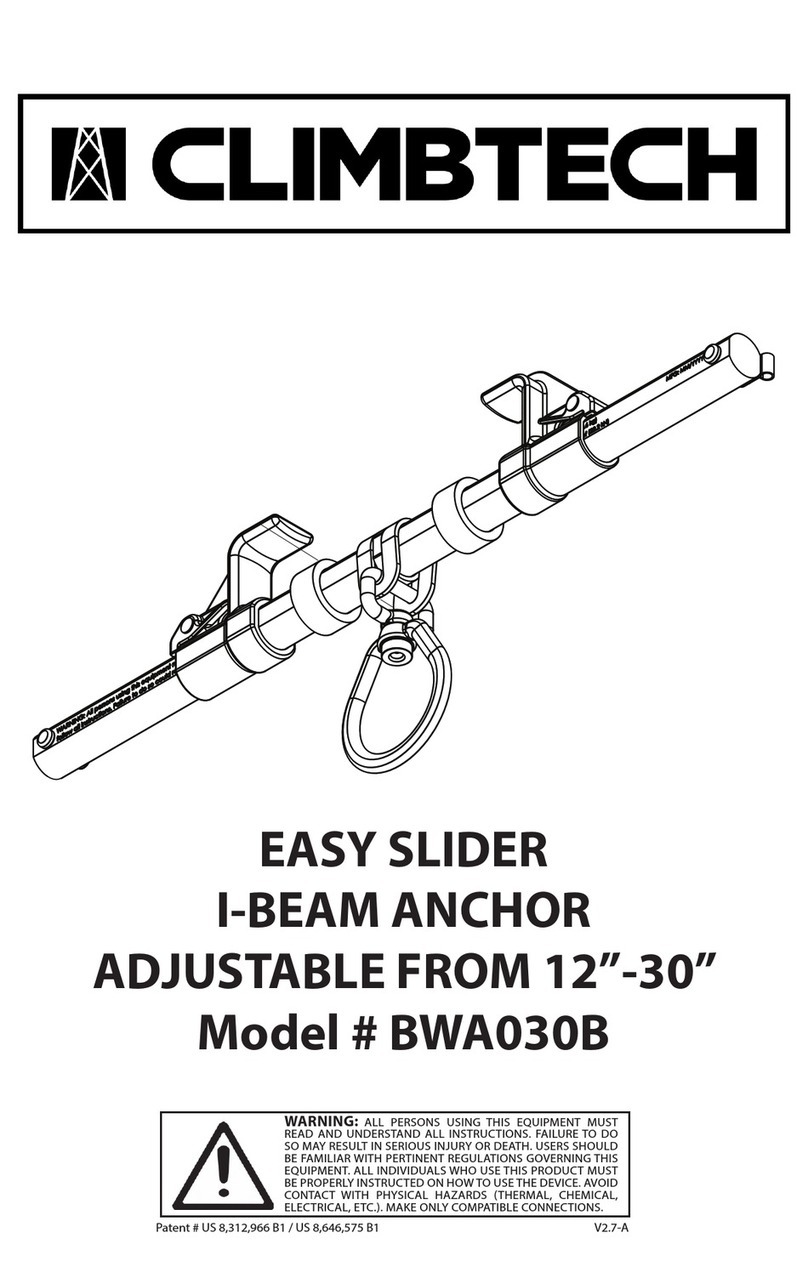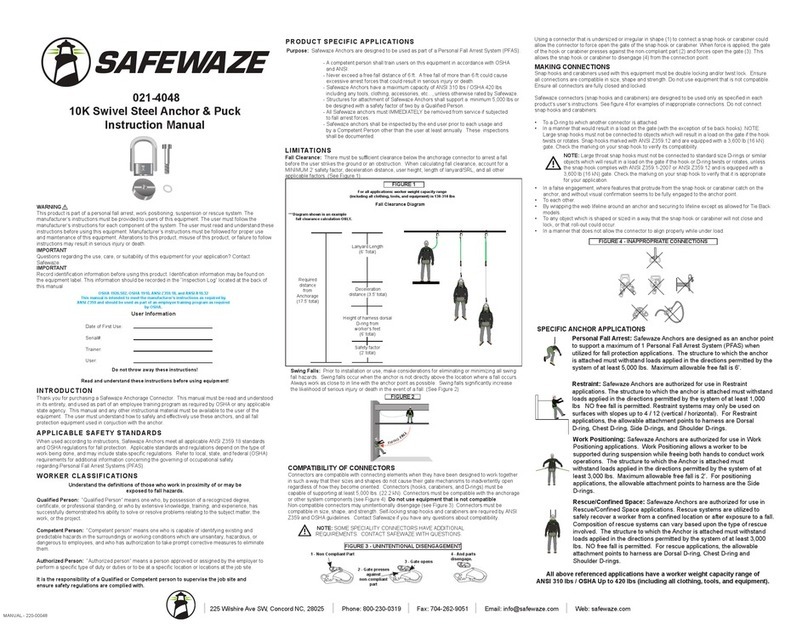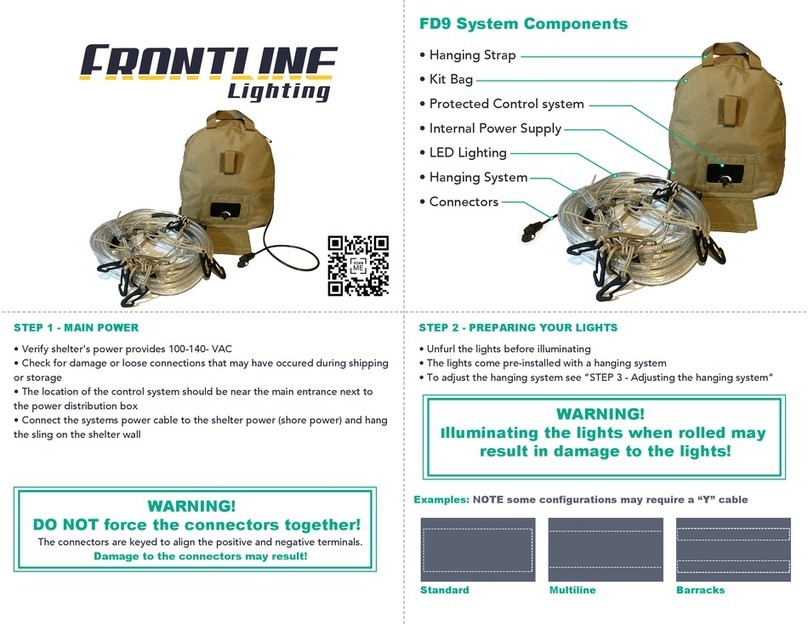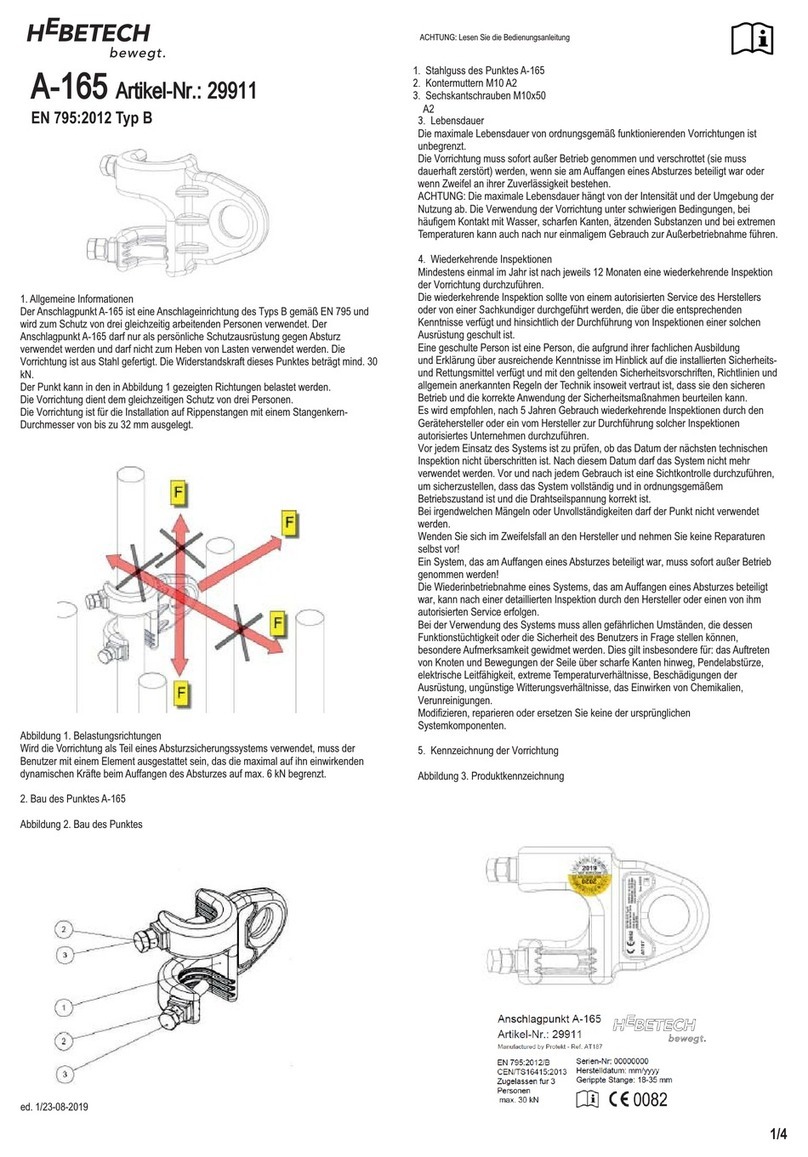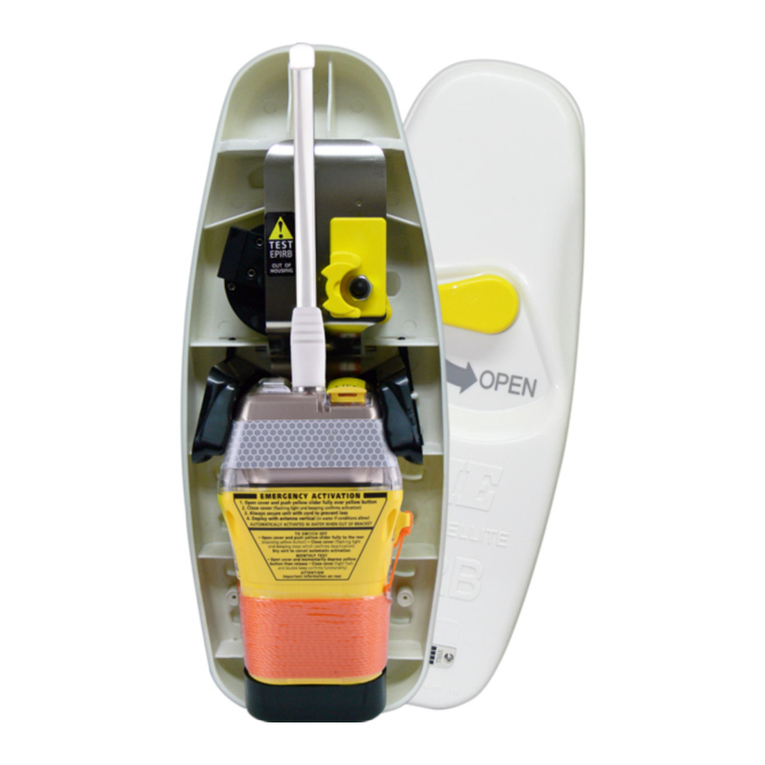
4
1.0 APPLICATIONS
1.1 PURPOSE: LAD-SAF flexible cable ladder safety systems are designed to provide protection against falling for
persons connected to the system while climbing fixed ladders or similar climbing structures.
A. APPLICATIONS: LAD-SAF systems include installations on fixed ladders or ladder like climbing surfaces
that are part of a structure. Examples include; water tank ladders, mono poles (wood, steel, or concrete)
buildings, manways, antenna structures, and towers.
1.2 LIMITATIONS: LAD-SAF systems are not intended to be installed on portable ladders. These systems are
designed for use on ladders that are generally vertical. Ladders must be at least 75 degrees from horizontal for
proper system operation, except for curved top bracket installations. The following application limitations must be
considered before installing or using the LAD-SAF system.
A. LADDER STRUCTURE: The ladder structure to which the system is installed must be capable of
withstanding the loads applied by the system in the event of a fall.
B. SYSTEM CAPACITY: The number of users allowed on the system at one time varies depending on the type
of system and installation. Generally, system capacities range from one to four users. See sections 2.0 and
3.0 for more information on capacity limitations. System capacities are based on maximum user’s weight,
including tools and clothing, of 310 lbs.
C. ENVIRONMENTAL HAZARDS: Use of this equipment in areas with environmental hazards may require that
additional precautions be taken to reduce the possibility of injury to the user or damage to the equipment.
Hazards may include, but are not limited to: high heat caused by welding or metal cutting; caustic chemicals;
seawater; high voltage power lines; explosive or toxic gases; moving machinery; sharp edges.
D. COMPONENT COMPATIBILITY: LAD-SAF systems must be installed and used as a complete system. Only
DBI/SALA’s detachable cable sleeve may be used with this system. DBI/SALA recommends using a full
body harness with a front attachment for ladder climbing. A body belt is not recommended for use with the
LAD-SAF system. If a fall occurs when using a body belt it may cause unintentional release and possible
suffocation because of improper body support. Substitutions of equipment or system components must not
be made without the written consent of DBI/SALA.
E. TRAINING: This equipment is intended to be installed and used by persons who have been trained in its
correct application and use.
1.3 Refer to applicable local, state, and federal (OSHA) requirements governing this equipment for more information
on ladder safety systems and associated components, including OSHA 1910.27.
2.0 SYSTEM REQUIREMENTS
2.1 COMPATIBILITY OF COMPONENTS AND SUBSYSTEMS: This equipment is designed for use with DBI/SALA
approved components and subsystems. The use of non-approved components and subsystems may jeopardize
compatibility of equipment, and could affect the safety and reliability of the complete system.
2.2 COMPATIBILITY OF CONNECTORS: Connectors used with this system (hooks, carabiners, D-rings) must be
capable of supporting a minimum of 5,000 lbs. Use caution to assure compatibility of hooks and the connection
point. See section 4.3 on making connections. Non-compatible connectors may unintentionally disengage (roll-
out). Connectors must be compatible in size, shape, and strength. Self closing/self locking connectors are highly
recommended by DBI/SALA.
2.3 LOAD REQUIREMENTS FOR STRUCTURE AND BRACKET CONNECTIONS: The climbing structure to which
the LAD-SAF system is installed must be capable of supporting the loads imposed by the system. For
calculation purposes the required bracket load may be assumed to be distributed evenly between the number of
rung attachments. For example;The 6116280 top bracket is supplied with three rung connections. The load
required for each rung for a single user system is 1,125 lbs. per rung (3,375/3).
A. TOP BRACKET: The top bracket connection loads include system pretension and forces associated with





















